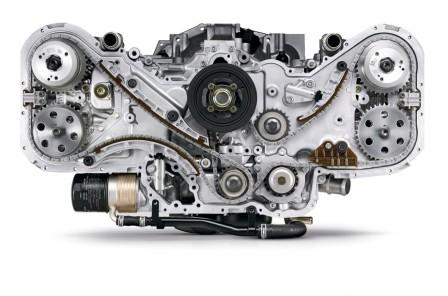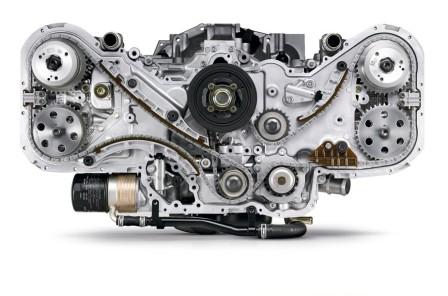
As the debate over 2-stroke vs. 4-stroke snowmobile engines continues with no clear winner. However, a new concept has emerged that might leapfrog all existing engine technology, paving the way as the NBT (next big thing) in the motorsports industry.
Speaking on condition of anonymity, an engineer from the aftermarket company Boswell Carburetion confirmed plans for a new engine design that sidesteps the conundrum of whether to produce 2-stroke or 4-stroke engines.
What might the NBT be? A 3-stroke diesel.
“There has never been a period in the 50-plus years of snowmobile history that’s presented a greater challenge of engine development than the current one,” said acknowledged a well-know snowmobile journalist and historian.
Why? All engines must meet EPA-mandated emissions levels; a large percentage of snowmobilers are unwilling to accept the added weight of a 4-stroke engine; some of the direct-injected 2-strokes currently available destroy cranks with clock-like regularity; and the cost of developing and tooling for a new engine is so astronomically high that manufactures are all but required to produce these new engines for upwards of a decade just to cover their investment costs.
But perhaps the greatest current challenge facing snowmobile manufactures is customer and/or mechanic-access to an engine concealed behind layers of plastic and chassis spars fastened together with every fastener known to man except a black rubber bungee strap.
Indeed, the prospect of a fouled plug on most new snowmobiles can no longer be remedied by a five minute trailside repair. Instead, swapping in a new sparkplug has evolved into weekend-consuming affair requiring a degree in mechanical engineering and the skills of a circus contortionist.
Thus the prospect of an engine that runs without sparkplugs is decidedly appealing to manufactures and customers alike. Hence the venerable diesel, which produces combustion via compression of the fuel/air mixture rather than spark.
“If we can simply eliminate sparkplugs from the engine equation, we’ve tackled a primary challenge of modern snowmobile design,” said an internet chat room engineer. “The problem has always been sparkplugs! Think of the early days of snowmobiling… changing sparkplugs every few miles. If engine design would have eliminated them, then snowmobiling would have progressed far quicker.”
The benefits of a 3-stroke design are equally compelling.
By separating the combustion cycle from the exhaust cycle (like a 4-stroke) a 3-stroke will easily achieve current emissions targets. Yet by eliminating the valve train associated with all 4-stroke designs, a patent-pending 3-stroke preserves the lightweight characteristics of a 2-stroke. Once engineers can determine what, exactly, the third stroke refers to, they might possibly be able to use it to power additional snowmobile features, such as an iPad or a flat screen television.
But perhaps the greatest attribute of a 3-stroke is public acceptance.
“We have 4-stroke owners who swear they’ll never ride a 2-stroke engine ever again,” says a dealer in Ogilvie, Minn. “Yet we also have 2-stroke customers who scoff at the idea of owning a 4-stroke.
“A 3-stroke bridges the gap by offering a veritable middle ground in which neither side “loses face” and is forced to concede. From a geo-political standpoint it’s similar to Switzerland.”
Once engineers crack the code for developing the third stroke, there’s no limit to potentional future engine designs, including the incredible power that might be possible via 9- or even 13-stroke engines.
With the computing power available to most design engineers, the timeframe required to design, test and manufacture a 3-stroke diesel snowmobile engine is decidedly compressed.
Said one engineer, “Once we achieve the Proof of Concept stage, I think we could do it [produce such an engine] in 2-3 years… about the same time it takes to change a sparkplug on some current snowmobile models.”
Another key feature is ability to add an aftermarket “rumble-pack” can.
Could Arctic Cat be the first company to market a 3-stroke diesel snowmobile engine, or might this open the possibility for the return of Redline? When I asked that question during a recent visit, an engineer from the engine department would only smile and and shake his head vigorously, with a look of complete disbelief.
Stay tuned for future developments. And for more information, see THIS STORY.
Yes folks, it was posted on April 1, aka April Fools Day.
Thanks for playing along.
